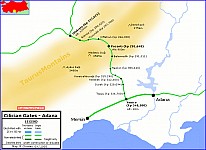The Cilician gates
The Cilician Gates is the famous pass through the Taurus mountains from the Anatolian plateau to the Cilician plains. It is the most well known way to reach Adana and it has been used since the antiquity. Alexander the Great or Saint Paul are among the most famous travelers across this highly scenic pass.
When the Germans built the Baghdad Railway through this pass, they choose to not follow the antic road all the way. From Pozanti south, they placed the line on average 10km east of the road in order to avoid the most winding part of the pass and to ease the gradient of the line since the antic road goes down very quickly. In exchange, the builders had to dig their way through the mountains and place the line in some hair rising spots. The amount of work to be done in this hostile environment required a narrow gauge line (600mm gauge) to carry men, equipment and material. This line was also heavily used for military purpose since it became the lifeline of the Mesopotamian front in 1917 / 1918. In itself, this narrow gauge line required quite some impressive works as shown by the pictures here below.
Finally, the line was opened on October 1918 and remained in its original design to this day. It is an almost continuous climb from Yenice to Ulukisla (about 100km) and goes through 37 tunnels (cumulative length 14,4 km).
To this day, it is one of the greatest feats of engineering and a visit is very much recommended.
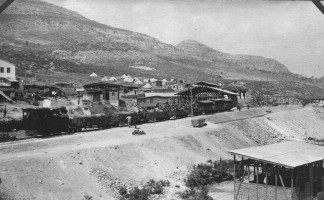
A view of a narrow gauge train, carrying troops and supplies. The Henschel Bagdadbau lok is pulling a long string of typical WW1 German cars. Col. Gunter Hartnagel | 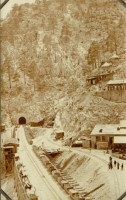 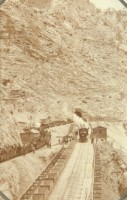
An overall view of Kusçular, showing extensive narrow gauge tracks. The final platform looks complete. Col. Gunter Hartnagel |
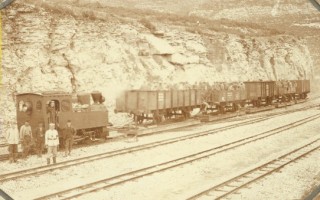
A very rare view showing carrier trucks used to transfert standard gauge wagon over the narrow gauge track. The loco is a again an Henschel. Col. Gunter Hartnagel | 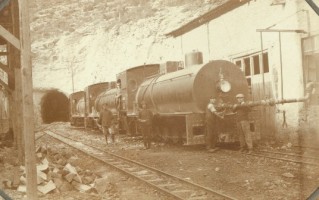
Three fireless locos at the Hacikiri filling station, most likely Henschel. Col. Gunter Hartnagel |
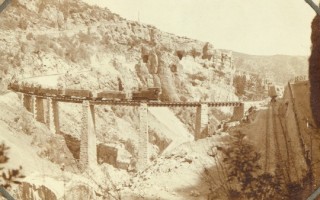
Another unique view: the temporary narrow gauge bridge build near Haikiri. Col. Gunter Hartnagel | |

The big viaduct near Hacikiri, 1999. Photo Malcolm Peakman | 
The same viaduct from a different angle, near Hacikiri, 1999. Photo Malcolm Peakman |
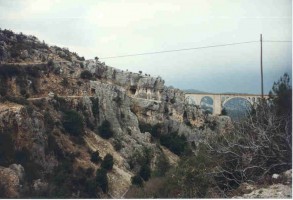
The pictures shows the old narrow gauge alignment running through tunnels on left. 1999. Photo Malcolm Peakman | 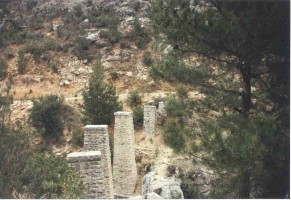
Bridge piers of the former narrow gauge viaduct (see above). 1999. Photo Malcolm Peakman |
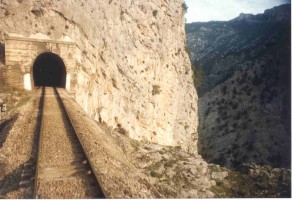
Between Hacikiri and Belemedik, the line passes along the river gorge, high on one side in and out of tunnels; these are all views from rear of train, 1998. Photo Malcolm Peakman | 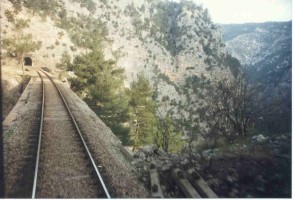
Again between Hacikiri and Belemedik, 1998. Photo Malcolm Peakman |
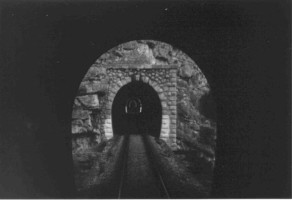
4 tunnels are seens on this picture. This is typical of this line. Photo Malcolm Peakman | |

